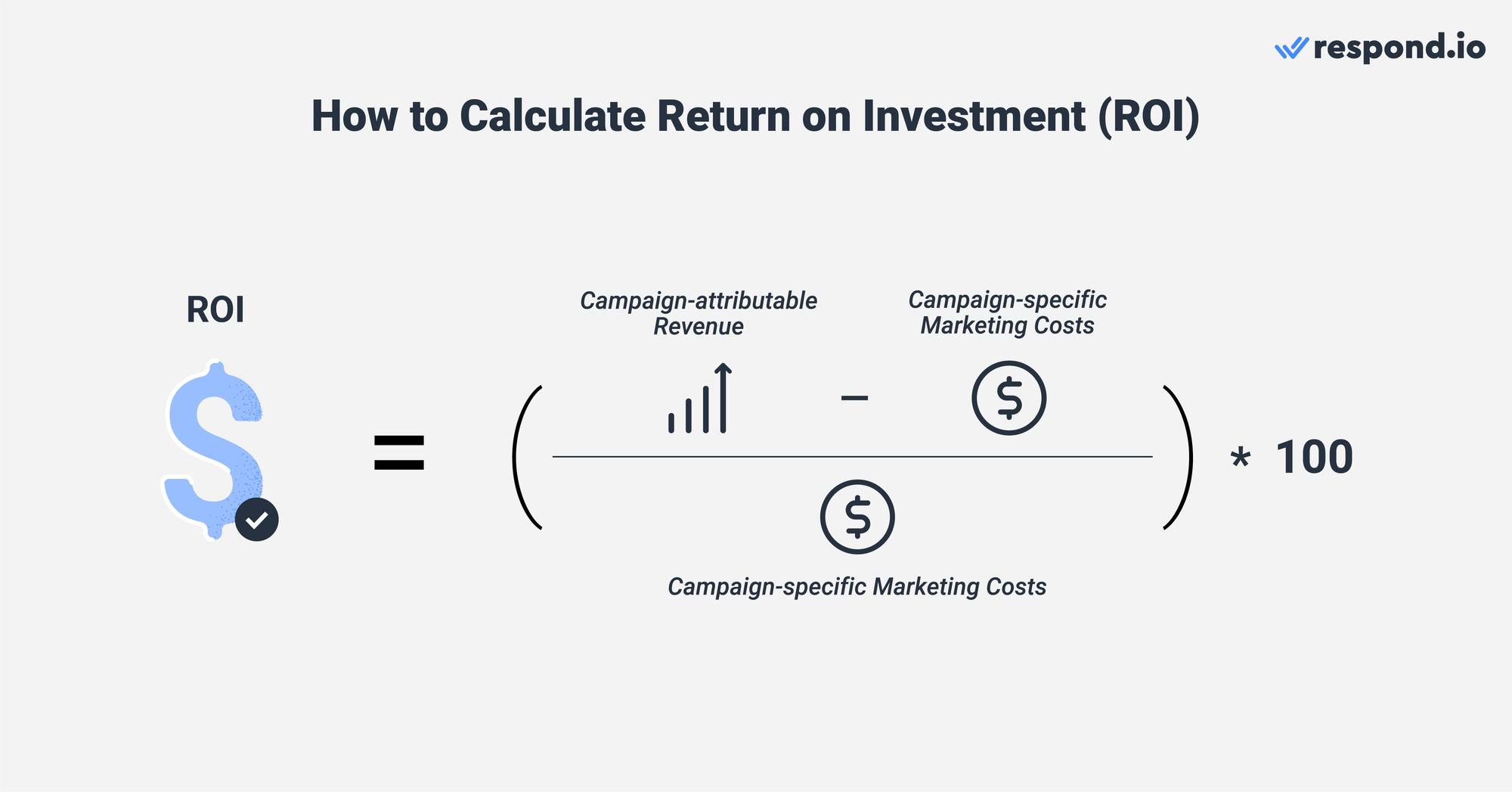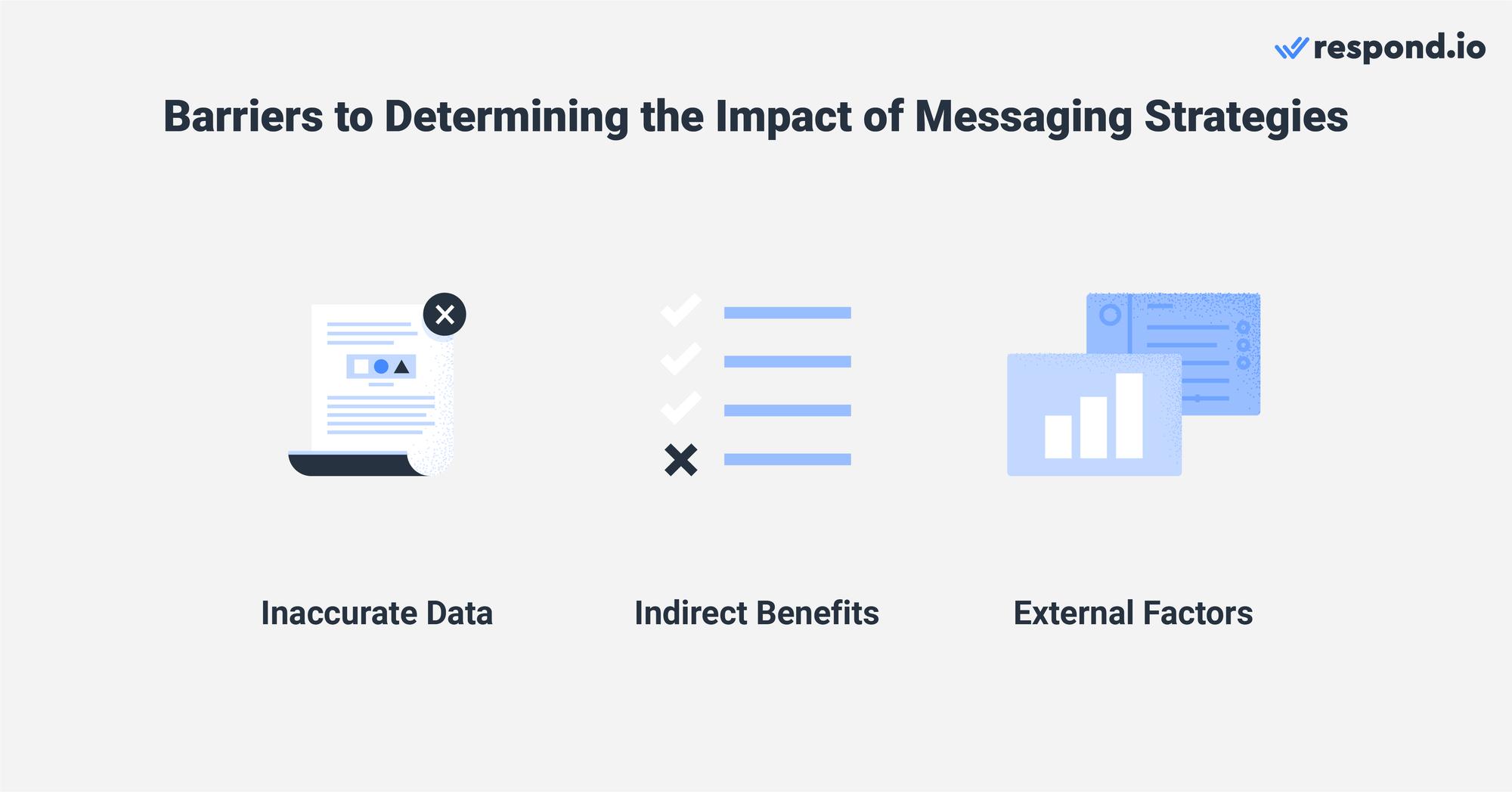
Effective messaging can unlock significant business growth. Understanding and proving the return on investment (ROI) of your messaging strategy isn’t just beneficial—it’s essential.
Why? Because it’s about knowing the real value behind every message sent and every conversation had. We’re not just talking numbers though. We’re exploring how to translate your messaging efforts into results.
Understanding the Fundamentals of Messaging Strategy ROI
ROI is more than just another industry term for customer conversation management. It’s a fundamental metric and the bedrock of your strategy.
Imagine ROI as a scorecard, providing a breakdown of the performance and impact of your messaging initiatives. It’s an essential tool that can gauge the success of your efforts by linking the effectiveness of your messaging strategies to tangible outcomes like increased sales and improved customer loyalty.
Results here are not coincidences. They’re the direct results of well-executed strategies.
In this scenario, the key metrics serve to measure a variety of aspects, from customer engagement rates to conversion rates, helping paint a comprehensive picture to illustrate how each facet of your messaging strategies contributes to the overarching goal of business growth.
Setting Up the Right Framework for Measuring Messaging Strategy ROI
Like laying the foundation for a sturdy house, setting up the right framework for measuring the ROI of your messaging strategy is critical. Without it, you risk the stability and success of your entire strategy. To do this, here’s how:

Ensure You Track the Right Metrics
To measure the ROI of your messaging initiatives, it’s crucial to start with a solid foundation. This means clearly defining which KPIs or metrics will be tracked such as revenue by campaign.
Are you aiming to drive engagement for promotional campaigns, boost sales, or something else? These objectives are not just checkpoints but beacons that guide your business growth strategy.
Choose the Best Tools for Measuring Messaging Campaign ROI
Once your metrics are clear, selecting the right tools and platforms for tracking and analysis becomes an informed choice, not a shot in the dark.
Opt for customer conversation software like respond.io which allows you to collect information on conversions, engagement with broadcasts, Customer Satisfaction Scores (CSAT) and provide in-depth reports and analytics. While it doesn't directly offer the ability to track ROI, its integrations with various software, from open APIs to Zapier, enable a comprehensive examination of your messaging’s effectiveness and its indirect impact on ROI.
Design Your Messaging Strategy Carefully
When designing a strategy, start by thoroughly understanding your clients, identifying what appeals to them and tailoring your messaging accordingly, including to the platforms they frequent. Careful planning follows, where campaigns must be meticulously structured, employing analytics to glean insights into consumer preferences, with a marketing funnel shaping the strategy and A/B testing fine-tuning ad effectiveness.
But don’t forget to break the campaign into smaller, manageable pieces. It makes everything more manageable and measurable. Adjusting and refining strategies is much easier when you’re working with bite-sized goals, instead of overly ambitious ones!
Remember, a well-defined ROI framework isn’t just about measurements. It’s a strategic compass guiding your campaigns toward greater alignment with your business goals.
Turn customer conversations into business growth with respond.io. ✨
Manage calls, chats and emails in one place!
Quantifying the Impact of Messaging Strategies
A messaging strategy is the pillar of your company's overarching marketing and communication plan. It's all about conveying who you are and what you do to the world through various communication channels.
Accordingly, calculating the ROI of your messaging strategy is crucial. It’s about connecting the dots between your efforts and their tangible results.
Let’s take a look at how exactly you can put a price on proper messaging:
Calculating ROI for Messaging Campaign
ROI is all about the profit you earn for every dollar spent. To figure this out, you'll need to start by identifying two things: your campaign-attributable revenue and your campaign-specific marketing costs.
Campaign-attributable revenue generated refers to the income you've earned thanks to your messaging efforts. To find this figure, you'll need to use a mix of methods—from landing pages and tracking codes to analytics and customer surveys—to quantify your campaign's financial impact.
On the other hand, campaign-specific marketing costs include all the expenses related to your campaign. These could range from messaging platform fees and content creation costs (like images) to distribution expenses (e.g., if using SMS), although the specifics will vary from one campaign to another.
With these in hand, your ROI can be calculated with the following formula:

An Example of ROI Calculation
Now, let's put this formula into practice with a hypothetical messaging campaign. Picture yourself as an online education business selling language courses. You’ve just kicked off a messaging campaign on WhatsApp to hype up the launch of a new course.
Here's the breakdown of your campaign's figures:
Campaign-attributable revenue: Thanks to your messaging campaign, you’ve enrolled 50 new students, bringing in a total of $87,000 in sales for your new language course.
Campaign-specific marketing costs: The overall costs tied to this campaign, which include the subscription costs for the messaging platform and the creation of creative assets, is $25,750.
With the above ROI formula, you’re ready to crunch the numbers and see the value your campaign brought in.
Return on Investment (ROI) = (87,000 - 25,750 / 25, 750) * 100
The ROI we calculated is 237.86%. This indicates for every dollar that was invested in your campaign, you netted $2.38 in profit, after accounting for the original campaign-specific marketing costs.
Common Challenges in Quantifying the Impact of Messaging Strategies
While the example we explored is relatively straightforward, in reality, things are rarely as clear-cut. Some of the most common challenges that complicate the ROI calculation include:

Inaccurate Data
The accuracy of your ROI calculations depends entirely on the quality of your data. Make sure to audit your data for accuracy and completeness regularly and consider investing in data analytics software before thinking about measuring the impact of your messaging strategy.
Indirect Benefits
Your messaging strategy may produce benefits beyond those captured in the ROI calculation which may not be straightforward to track and quantify (e.g., increased brand awareness). Beyond ROI, it's wise to include metrics to monitor brand search volume and even customer satisfaction scores to keep tabs on these aspects.
External Factors
Factors beyond your control, like competitor initiatives and market shifts, can affect your business, potentially complicating the accuracy of your ROI calculations. To account for this, ensure you closely monitor external trends and competitor activities and account for them as part of your calculations.
Demonstrating the Value of Your Messaging Strategy to Stakeholders
When it’s your moment to showcase the value of your campaigns to your stakeholders, it’s important to be engaging and informative. Imagine yourself as a guide leading them through a narrative journey.
The main characters? The data and ROI from your messaging strategies. The plot? Demonstrating how your efforts don’t just tick boxes but actively fuel business growth.
Your audience, whether they’re CEOs, shareholders, or team leaders, doesn’t want a barrage of numbers. They want a story that translates those figures into clear impacts on business objectives.
Here’s where understanding your stakeholders comes into play. Each stakeholder has unique interests and preferences for receiving information. Use tools like stakeholder maps or surveys to grasp what matters most to them. Then, frame your data presentation around these insights to ensure it resonates with and engages them.
And above all, ensure you choose the right metrics. They should align with your organization’s strategic goals and stakeholder priorities. To help with this, ensure they are SMART:
specific
measurable
achievable
relevant
time-bound
How to Present Your Messaging Strategy ROI through a Strong Narrative
Let’s now talk about storytelling. This is where you bring your data to life to fully showcase the impact of your messaging strategy. To best do this:
Structure your narrative with a clear beginning, middle and end. Start with setting the stage by framing the challenge your campaign was tackling, then explore what you did specifically to address it and end strong with clear results and impact.
Seek feedback from others before presenting. Spending the most time with your data may make the numbers clear to you but it may not be as transparent to others. To ensure clarity for all audiences, seek feedback to bridge any gaps in understanding.
Use data visualizations where possible. Charts, graphs and dashboards help convey complex information in an accessible way, allowing stakeholders to quickly grasp the value of your ROI.
Ready to unlock the potential of your customer conversations? Discover how respond.io can revolutionize your messaging strategies with our free trial!
Turn customer conversations into business growth with respond.io. ✨
Manage calls, chats and emails in one place!
Further Reading
Did you find this helpful? Check out these related articles to learn more:






































 Electronics
Electronics Fashion & Apparel
Fashion & Apparel Furniture
Furniture Jewelry and Watches
Jewelry and Watches
 Afterschool Activities
Afterschool Activities Sport & Fitness
Sport & Fitness
 Beauty Center
Beauty Center Dental Clinic
Dental Clinic Medical Clinic
Medical Clinic
 Home Cleaning & Maid Services
Home Cleaning & Maid Services Photography & Videography
Photography & Videography
 Car Dealership
Car Dealership
 Travel Agency & Tour Operator
Travel Agency & Tour Operator




